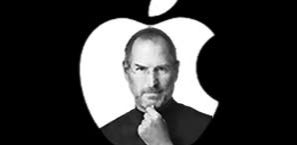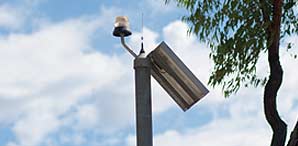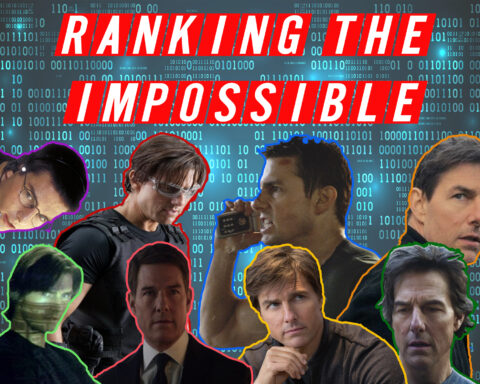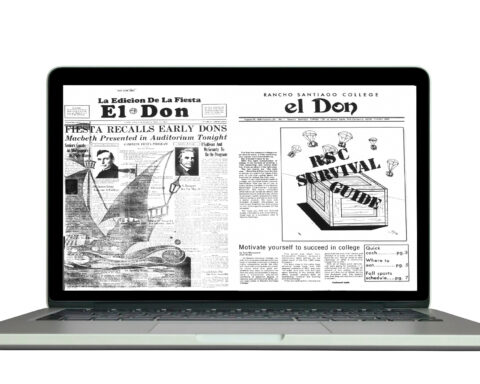Steve Paul Jobs, the innovative CEO of Apple, lost his battle with cancer on October 5. The Apple home page displayed a soft black-and-white photo of Jobs along with the year of his birth and, though expected, the date of his death.
Legions of Apple devotees, friends and family mourned the loss of the visionary entrepreneur who was diagnosed with pancreatic cancer in 2004.
Although he was not an inventor, Jobs has been compared to Thomas Edison and Henry Ford. Among many recognitions, in November of 2009 Fortune Magazine named him CEO of the Decade. It is a fitting title for the man that reshaped the landscape of personal and home computing.
Jobs and his team launched the iPod, iPhone and the iPad and through these products revolutionized the way the public consumes media.
Apple Inc. began in the garage of Jobs’ parents in the late 1970s. Twenty-one-year-old Steve Wozniak, 16-year-old Jobs and semi-retired Intel engineer Mike Markkula made up the team. Later, Jobs recruited John Sculley, employed at Pepsi-Co. at the time, and made him Apple’s CEO. Within the next decade, they created the first personal computer, the Apple II series, which would become the Macintosh. It became the first commercially successful small computer with a graphical user interface.
Toward the end of 1984, tensions developed between Jobs and Sculley, and during a board meeting in 1985, the company’s directors sided with Sculley, ousting Jobs. Being let go was the best thing that happened to him. “The heaviness of being successful was replaced by the lightness of being a beginner again, less sure about everything. It allowed me to enter one of the most creative periods of my life,” Jobs said in a 2005 Stanford University commencement speech.
In 1986 he acquired the computer graphics division of Lucasfilm Ltd., which became Pixar Animation. A decade later, Jobs sold Pixar to Disney for $7.4 billion. This allowed him to return to Apple, by then struggling against the Microsoft-powered PCs.
At the Macworld Expo in 2000, Jobs announced that he would be Apple’s CEO. He held that position until August 2011, when he resigned and named Tim Cook as his successor. Jobs became chairman of the board and held that position until his death.
Jobs was born on Feb. 24, 1955, in San Francisco to graduate student Joanne Scheible and Syrian immigrant Abdulfattah Jandali. Paul and Clara Jobs, a middle class family from Mountain View, Calif., adopted him. In 1972 Jobs enrolled at Reed College in Portland Oregon, but dropped out after one semester. During his speech at Stanford in 2005 he said, “This is the closest I’ve ever gotten to a college graduation.” He said he couldn’t justify squandering his parents’ money on what he saw as an uninteresting curriculum. He dropped out of college, and dropped in on the classes that interested him, including a life-changing calligraphy class. Jobs credits it as being the design foundation for the Apple computer.
In 2004, he was diagnosed with pancreatic cancer. He died peacefully in his home from complications from his illness. Jobs is survived by his wife Laurene and their four children. He is buried at Alta Mesa Memorial Park in Palo Alto, Calif.
TiMELINE:
- 1977: Apple Computer is founded by Steve Jobs and Steve Wozniack.
- 1981: Apple goes public and introduces its first desktop, Lisa Computer.
- 1985: Jobs is fired as Apple CEO and starts Pixar Animation and NextStep.
- 1997: Jobs returns as CEO after NextStep is purchased by Apple.
- 2004: Jobs is diagnosed with pancreatic cancer and takes a leave of absence.
- 2011: After a seven-year battle, Jobs succumbs to pancreatic cancer.
- The two-party system is failing us. - October 19, 2024
- Read our Fall 2023 Print: Vol. 100 No. 1 - October 23, 2023
- Santa Ana College Awarded State Department of Finance Grant - April 2, 2015











